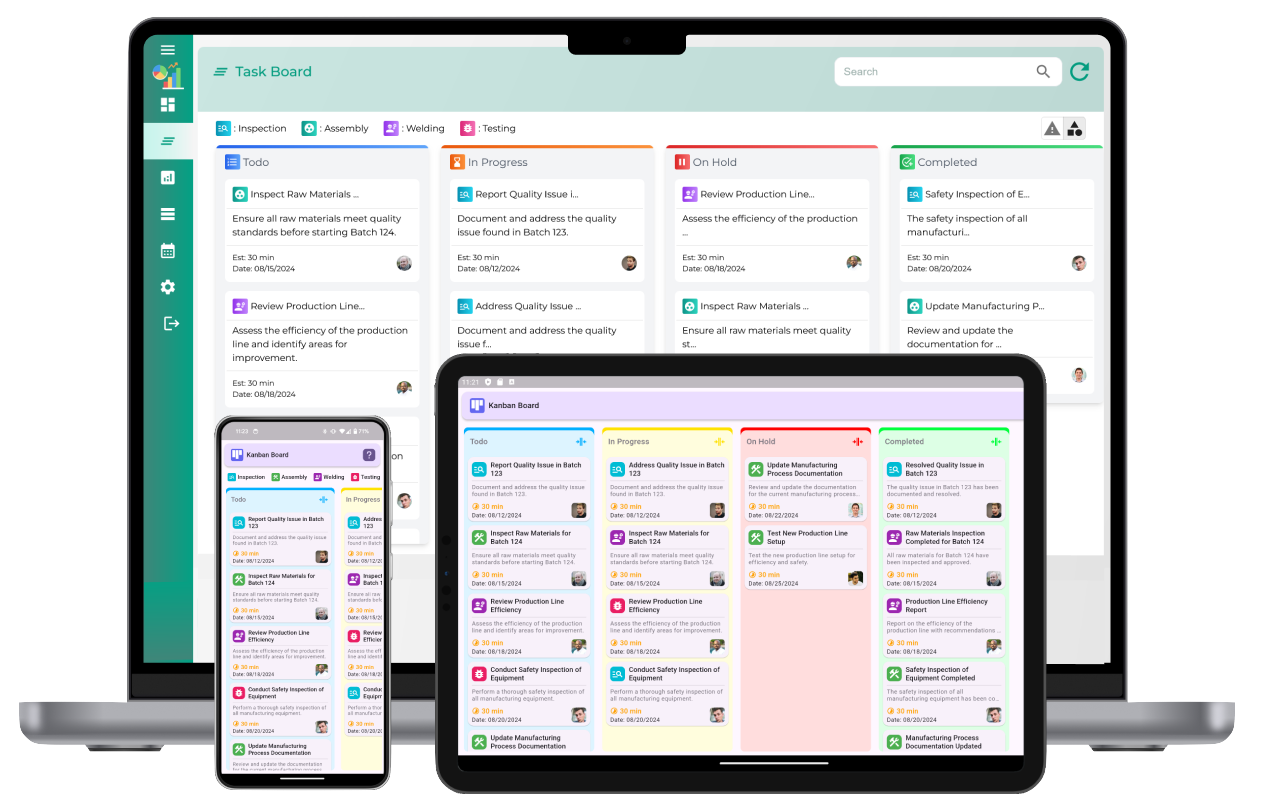What is a Kanban Board, and how does it work?
A Kanban Board is a visual tool used to organize and manage tasks in a workflow. It consists of columns that represent different stages, such as "To Do," "In Progress," and "Done." Tasks are displayed as cards and moved across columns as they progress. This system helps teams visualize their work, identify bottlenecks, and improve productivity.
What is the Kanban System, and why is it important?
The Kanban System is a workflow management method that emphasizes visualizing tasks, limiting work in progress (WIP), and ensuring smooth workflow. It is important because it enhances efficiency, reduces bottlenecks, and allows teams to adapt to changes while focusing on delivering value.
How did the Kanban System originate and evolve?
The Kanban System originated in the 1940s as part of Toyota’s Just-in-Time (JIT) production system. It was designed to optimize manufacturing workflows by visualizing tasks and inventory. Over time, Kanban principles have been adapted for knowledge work, such as software development and project management.
What are the core principles of Kanban?
The core principles of Kanban include:
- Visualizing workflows for better clarity.
- Limiting work in progress (WIP) to avoid overloading teams.
- Managing and optimizing task flow.
- Making process policies explicit for consistency.
- Using feedback loops to improve performance.
- Focusing on continuous improvement.
What are the key practices of the Kanban methodology?
Key practices include visualizing work, limiting WIP, managing flow, defining explicit policies, using feedback loops, and fostering continuous improvement through regular analysis and adjustments.
What are the features and components of a Kanban Board?
Features of a Kanban Board include columns (representing workflow stages), cards (representing tasks), WIP limits, swimlanes (to categorize work), and metrics like cycle time and lead time for tracking progress.
What are the different types of Kanban Boards?
Kanban Boards can be physical (whiteboards with sticky notes) or digital (software-based). They can be tailored for specific workflows, such as personal Kanban, team Kanban, or portfolio Kanban.
What are the top 5 benefits of using a Kanban Board?
The top benefits include improved workflow visualization, increased productivity, better collaboration, faster identification of bottlenecks, and enhanced flexibility in adapting to changes.
How can you create a Kanban Board step-by-step?
To create a Kanban Board:
- Define the workflow stages (columns).
- Add tasks as cards.
- Set WIP limits for each stage.
- Track task progress by moving cards across columns.
- Regularly review and update the board for optimization.
How is Kanban used in Lean Manufacturing?
In Lean Manufacturing, Kanban is used to manage production workflows and inventory by signaling when new items need to be produced or restocked, ensuring efficient use of resources and minimizing waste.
What factors should you consider when choosing Kanban Board software?
Key factors include ease of use, customization options, integration with other tools, reporting features, and scalability to suit team or organizational needs.
How does using a Kanban Board impact your ROI?
Using a Kanban Board can improve ROI by enhancing productivity, reducing bottlenecks, and enabling faster delivery of high-quality outcomes. It supports better resource allocation and minimizes delays.
How can online Kanban Boards support remote or distributed teams?
Online Kanban Boards provide real-time updates, collaboration features, and accessibility from anywhere, enabling remote teams to coordinate effectively and stay aligned on project progress.
How does a Kanban Board function in a workflow?
A Kanban Board functions by visualizing tasks and their progress through workflow stages. It helps track work, manage priorities, and optimize processes for efficiency and transparency.
What is a Kanban List View, and how is it used?
A Kanban List View organizes tasks in a linear list format, typically grouped by stages or categories. It is used when a detailed overview of tasks is required, offering clarity for task prioritization and management.
